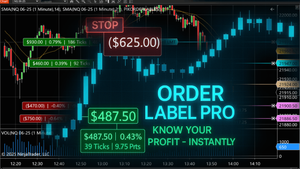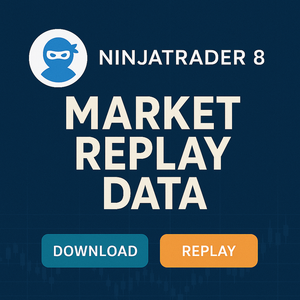Mastering Futures Scalping: How Traders Profit from Small Market Moves
In the world of futures trading, one strategy stands out for its speed and precision: scalping. Unlike swing trading or position trading, scalping involves executing dozens—or even hundreds—of trades each day to capitalize on small price fluctuations. While this high-intensity method may not be for everyone, experienced day traders often use it to generate consistent profits by leveraging market volatility and advanced tools.
What is Futures Scalping?
Futures scalping is a trading technique that focuses on taking advantage of tiny price movements in futures markets, such as the S&P 500 E-mini (ES), Nasdaq (NQ), or crude oil (CL). These trades are typically held for just a few seconds to a few minutes, with the goal of capturing 1 to 5 ticks of profit per trade. Due to the small margins, scalping requires fast decision-making, strict risk management, and lightning-fast execution.
Why Scalpers Love Futures
- High Liquidity: Futures markets, especially the ES and NQ, are extremely liquid, allowing traders to enter and exit positions quickly without slippage.
- Low Transaction Costs: Scalping requires frequent trades, so low commissions and tight bid/ask spreads are essential—and futures brokers often offer both.
- No PDT Rule: The pattern day trading rule does not apply to futures, giving traders unlimited intraday trades regardless of account size.
- Leverage: With futures, traders can control a large contract value with a relatively small margin, increasing profit potential—but also risk.
Popular Scalping Setups
Scalpers use a variety of technical tools and chart patterns to identify opportunities in the market. Some of the most popular scalping setups include:
- Order Flow and DOM (Depth of Market): Many scalpers watch the order book to gauge supply/demand in real time and execute based on order imbalances.
- VWAP Reversions: When price pulls away from the Volume Weighted Average Price and reverts, scalpers can take quick entries in the direction of the mean.
- EMA Pullbacks: Using moving averages like the 21 EMA, traders wait for price to pull back and then enter on confirmation candles or wicks.
- Breakout Scalping: Quick entries during a high-volume breakout of a support or resistance zone, with rapid exits once the initial push happens.
Risk Management is Critical
Because futures scalping involves frequent trades with tight profit margins, risk management is absolutely critical. Traders must use defined stop-loss levels, limit their trade size, and avoid revenge trading. Even a few bad trades without discipline can quickly wipe out a day’s gains—or worse.
Tools for Scalping Futures
Most successful scalpers use specialized trading platforms such as NinjaTrader, Bookmap, Sierra Chart, or ThinkOrSwim. Features like custom hotkeys, tick charts, real-time data feeds, and market depth visualizations are essential to execute with precision.
In addition, some scalpers automate their trades using custom scripts, indicators, or even AI-driven logic to eliminate hesitation and improve speed. Regardless of the method, consistent journaling and backtesting are essential for continued improvement.
Conclusion
Futures scalping is a challenging but rewarding strategy for those who thrive in fast-paced environments. With the right tools, strategy, and discipline, it is possible to turn small market moves into consistent daily income. However, it's not without risk—mastery comes only through experience, practice, and a relentless commitment to improvement.














